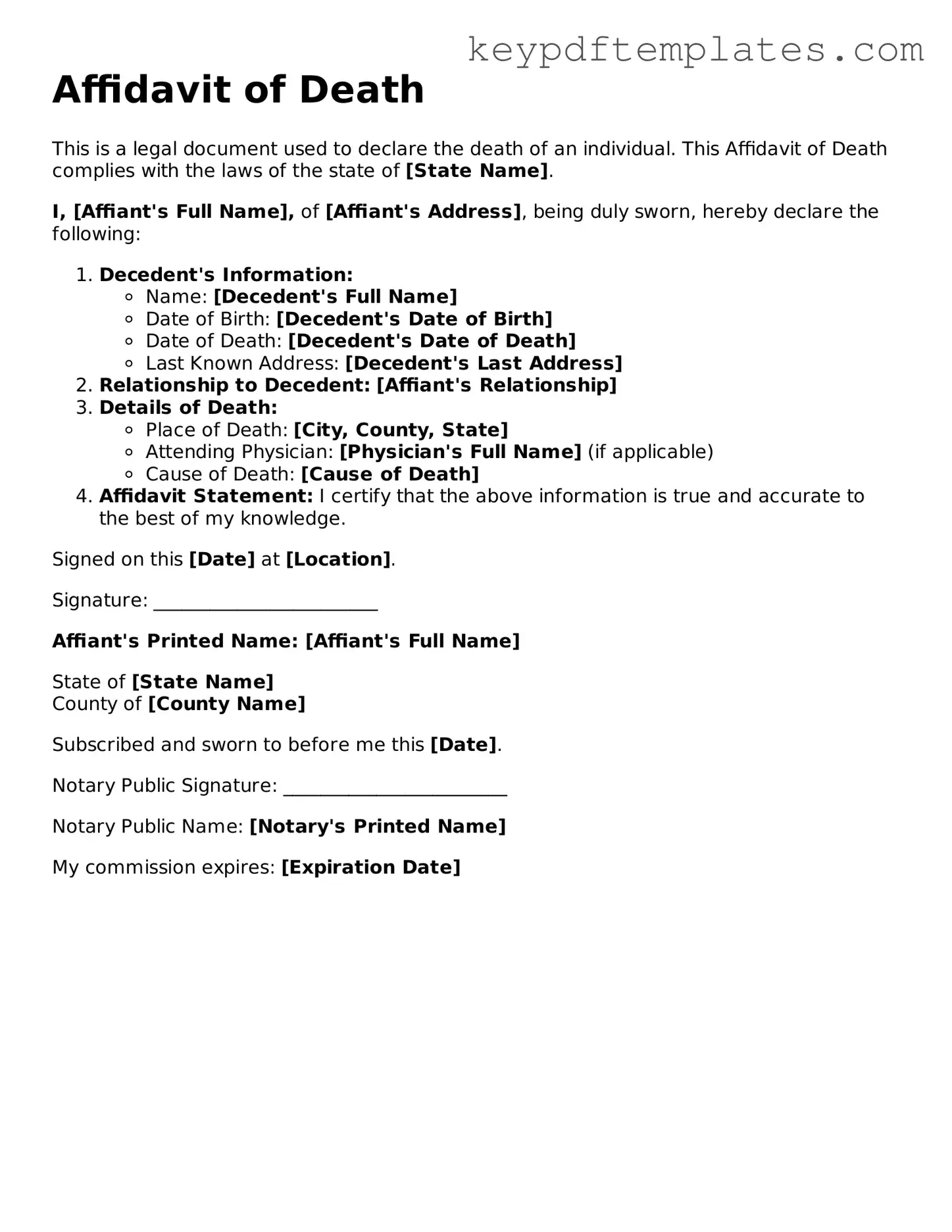Printable Affidavit of Death Template
The Affidavit of Death form is a legal document used to officially declare an individual's death. This form serves as a vital record, often required to settle estates, transfer property, or access benefits. Understanding its purpose and the process for completing it can help ease the burdens during a difficult time.
Modify Document Online
